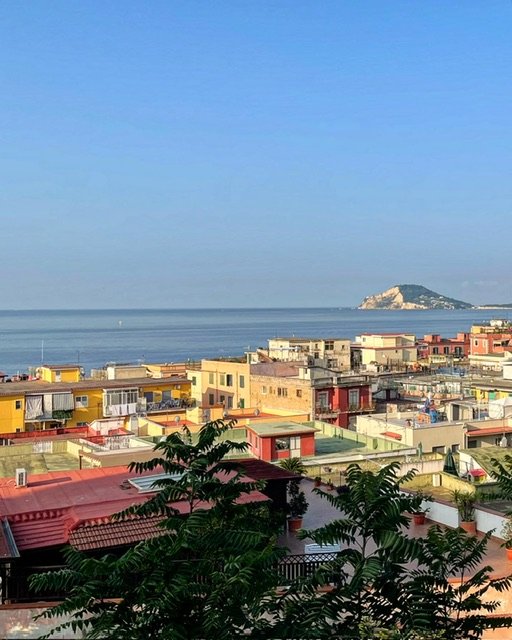I am delighted to be included in the WAVE: SPICE (Warnings and Alerts during Volcanic Emergencies: Scientific Practice Informed by Community Experience) consortium with a focus on the Pozzuoli area of Naples and Campi Flegrei caldera. Here is a brief introduction of what we are doing that was put together by the lead scientist, Chris Kilburn (UCL). In summer 2023 we spent a few weeks doing preliminary work there in preparation for the larger project and also in preparation for a 4-week summer travel course taught through NYU Gallatin from Pozzuoli in Summer 2024 (more to come about that as it develops!). Here is an article that came out in The Guardian while we were there.
Solfatara
I believe strongly in its interdisciplinary focus on entwining predictive sciences, study of the past, and the arts to communicate environmental risk to communities regarding environmental events and changes. This project has all of those. To boot, it gives the chance for time with the tuff deposits and boiling mud and gases in the volcanic landscape of Campi Flegrei volcano (from a respectful distance). Pozzuoli was the ancient city of Puteoli. It is iconic in geological terms for the early Roman marketplace ('Temple of Serapis'/'Macellum of Pozzuoli') that was clearly built above sea-level, sunk beneath the water, then rose again through uplift and was featured in Charles Lyell's 'Principles of Geology' as the columns of the site are filled with holes from clams that drilled into them while it was submerged. It is relatively quiet-ish now (well, not in the early 1970s and early 1980s) but in the past was the port where all the Egyptian grain entered the Roman empire, where Paul landed before heading on the Appian Way to Rome, where one of the largest theaters in the empire was located (60,000 spectator capacity), where Nero tried to kill his mother (one of the times),
Saint Sophia Loren
It was also where Sophia Loren grew up. Those other things aren't as important now as Sophia, who looms large on the street art of Naples as a literal saint. The streets this past summer were streamed with blue and white to celebrate the soccer championship the city won and images of the players were apotheosized anywhere you look. The happy chaos of Naples was balanced out by a walk around the leafy crater that is Lake Averno; by chance we stumbled across the caretaker with a key to enter the tunnel that was associated with the grotto of the sybil as well as, if you got the right (wrong?) path, Charon would find you and take you to Hades. Also snuck away to Baia archaeological park for another chance to spend time with the magical Temple of Mercury and its crazy acoustics and dome with the first Skyspace (sorry, James Turrell) and to see ancient Cumae, the first Greek colony in 8th c BC.
Deeply grateful to Ente Parco Campi Flegrei for the permissions to accompany their president and a documentary film crew into Solfatara, which has been closed to the public since the tragic accident in 2017. There is such a richness of geological and cultural heritage in this area that can be harnessed to better convey current/future environmental risks and prevent unnecessary loss of life. Including a sampling of images that I also shared on social media….
Park official just before capturing wild, free-range sulfur and arsenic for us!
sulfur, fresh and hot off the press/fumarole
The iconic Macellum (Serapeo) of Pozzuoli
The view from Pozzuoli
Cousins of the guys who drilled the holes into the columns at the Macellum when it sank below the water surface!
Ground control at the Vesuvius Volcano Observatory







